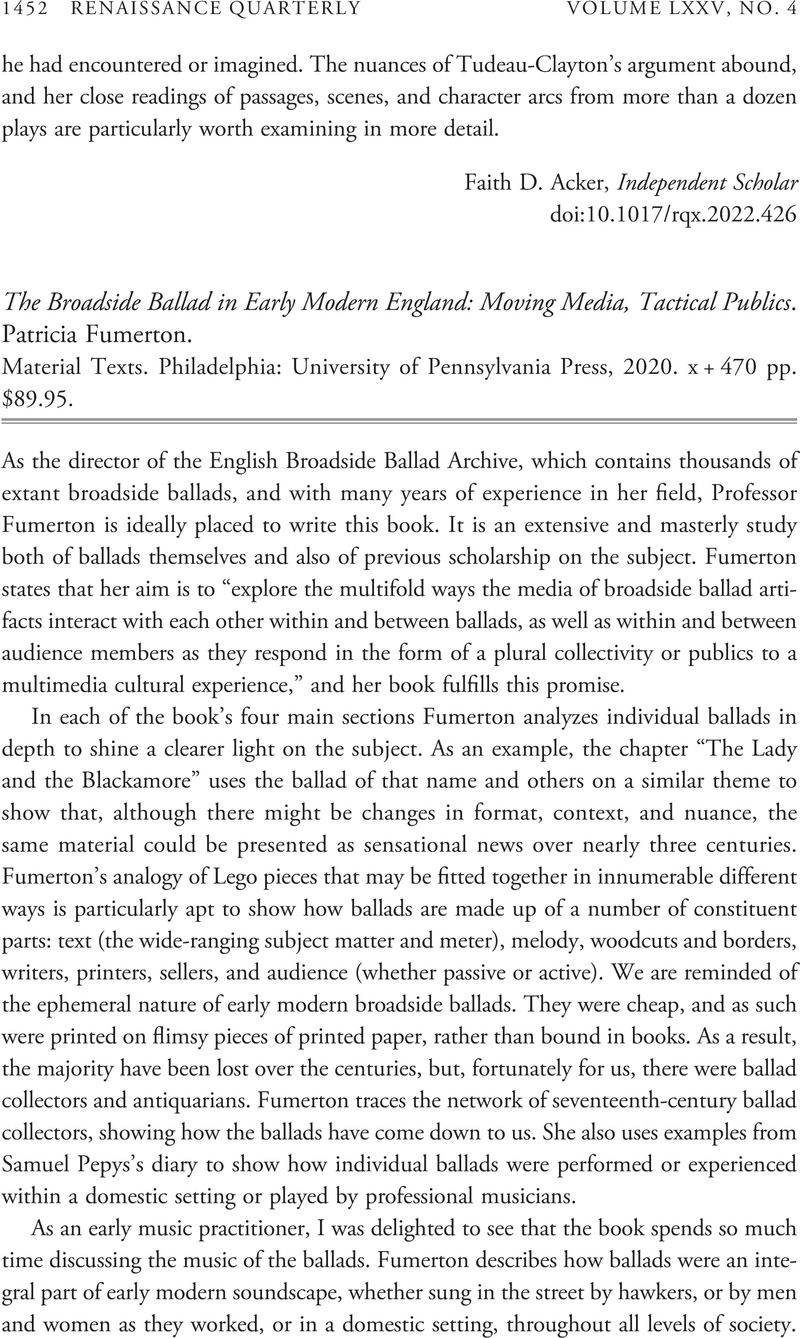No CrossRef data available.
Article contents
The Broadside Ballad in Early Modern England: Moving Media, Tactical Publics. Patricia Fumerton. Material Texts. Philadelphia: University of Pennsylvania Press, 2020. x + 470 pp. $89.95.
Review products
The Broadside Ballad in Early Modern England: Moving Media, Tactical Publics. Patricia Fumerton. Material Texts. Philadelphia: University of Pennsylvania Press, 2020. x + 470 pp. $89.95.
Published online by Cambridge University Press: 09 January 2023
Abstract
An abstract is not available for this content so a preview has been provided. Please use the Get access link above for information on how to access this content.

- Type
- Review
- Information
- Copyright
- Copyright © The Author(s), 2022. Published by the Renaissance Society of America



